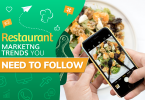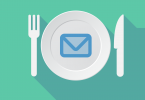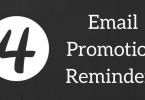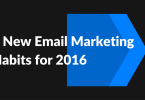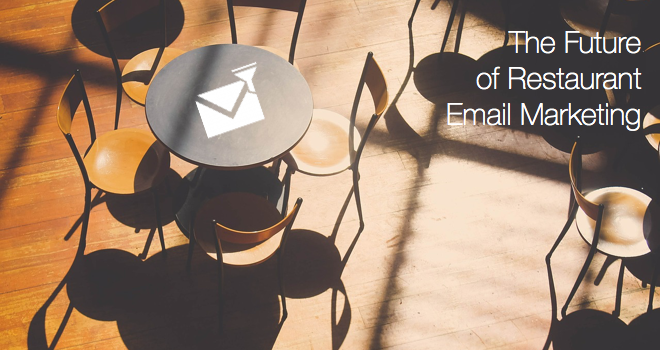
I know you believe in email marketing for your restaurant.
But I hope you’re ready to think bigger. Because it’s time to talk about marketing automation. The reason I hope you’re ready? It is the future of restaurant email marketing.
Behavior-based, data-driven, restaurant email marketing — blended with your one-off promotional emails and offers, and matched up with other automated marketing communications — is where you could be right now, setup within a week.
Today, I’m going to give you a glimpse into how it can work.
What is marketing automation?
Respected marketing software provider Hubspot defines marketing automation as, “software and tactics that allow companies to buy and sell like Amazon … to nurture prospects with highly personalized, useful content that helps convert prospects to customers and turn customers into delighted customers.”
It’s relevant to restaurants and email marketing because your already-useful email marketing channel can be supercharged with marketing automation secret ingredients. You don’t have to be in the retail business, or sell hard consumer goods, let alone be a massive brand like Amazon, in order to capitalize. It’s not just for those guys.
Of course, you can continue to push impersonal, mass emails out to your list, but why do that, when you can segment better, and automate like never before?
So don’t think of marketing automation as just another term for, or just a replacement for, your email marketing. It’s much more — but boy, what wonders it can do for your email marketing alone.
One real-world example of marketing automation
Jim walks into your Costa Mesa, California, restaurant location alone at 11:45 a.m. on a Wednesday. He doesn’t have your app and he isn’t currently on your email list, so we’re starting from scratch here. Jim orders your tomato & mozzarella panini, no chips, and a diet soda.
First of all, your staff should be encouraging the Jims of the world to join your e-club to enjoy future offers and advantages. So we’ll assume that happens here and Jim agrees, giving up his email address.
With the right marketing automation partner, you’re also capturing all of the right transaction details at this moment — you now know that Jim visited Costa Mesa, when he visited, you know what he ordered, and you know the transaction total of $11.25.
As it stands today, most restaurants toss Jim’s email address into a virtual wheelbarrow with the rest of them, where it’s hauled off to your email marketing provider. They (the customers) then get queued up to receive the exact…same…offer…in your Thank You for Joining confirmation email. And of course, they get the exact same email offer as everyone else next week, or next month.
But the future of restaurant email marketing entails this:
Jim’s email address is acquired online through a variety of more ingenuous lead capturing strategies. Or, you’ve acquired it by offering customers the ability to receive their receipt digitally (link leads you to our Directory entry for flexReceipts, out of Orlando, Florida). (Seriously, you need to look into them or a digital receipt alternative. It’s such a lowkey way to build a database.)
That email entry in your database is appended with publicly available, third-party data that adds demographics and psychographic details: Jim is between 35 and 44, his household income is between $100,000 and $150,000, he’s married with kids. We’ve written an article on segmentation previously.
So Jim gets a thank you email the next day that asks how his panini was and gives him a chance to click on a link to give you feedback. (You leave out the fact that he ordered a tomato & mozzarella panini because this was his first known order with you, and that would be a bit creepy to go overboard with the customization.
Your email to Jim also includes an invitation and low-key coupon to try the Mediterranean veggie panini on his next trip — but that offer expires in one week.
Jim’s a nice guy and gives you a 4/5 on that meal.
Before we take the next step, let’s recap the data points we have on Jim now:
- Jim is between 35 and 44.
- He’s married with kids.
- He visited your Costa Mesa location.
- He visited on a Wednesday.
- He visited around 11:25am, for lunch.
- He ordered the tomato & mozzarella panini and a soda.
- His order total came to $11.25.
- He gave you a 4/5 review of that dining experience.
Are you seeing the extraordinary array of filters that should help you differentiate Jim from, say, this customer:
- Sally is between 45 and 64.
- She’s not married, no kids.
- She visited your Torrance location.
- She visited on a Saturday.
- She visited after 5:00pm, for dinner.
- She ordered the southwest chicken flatbread with a tea.
- Her order came to $7.85.
- She joined your list, but did not review the meal.
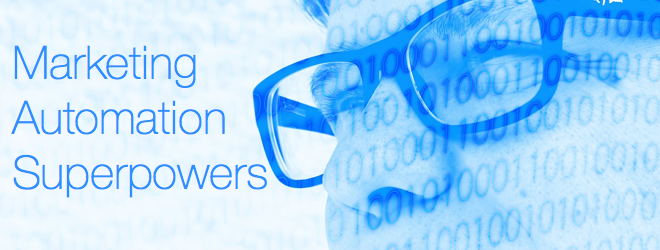
Maybe you’re skeptical because the difference between Jim and Sally is based on one transaction. But what if you could see a pattern of behaviors?
The keyword in the phrase marketing automation is the automation. You’ll never have time to slice and dice using these filters on your own.
You need the right marketing automation partner, clearly, who can setup segments that make sense and automated offers based on your customers’ demographics AND behaviors over time, i.e., ORDER HISTORY, in order to do this well.
4 Restaurant brands that are starting to deploy this:
Each of these restaurant brands is taking a different tack at segmenting, then automating, their marketing, but they’re all on the forefront of marketing automation:
Panera Bread, Golden Spoon, Island’s Restaurants, and Rita’s Italian Ice, among others.
What advantages can marketing automation provide?
By now, you can hopefully see or glean some of the potential advantages of marketing automation, and we’re just addressing personalized emails. We haven’t touched on including SMS (texting) as a channel, nor Facebook ads, nor targeted ads within others’ apps. But the advantages you can hopefully see are many:
- Highly personalized customer experiences.
- Highly personalized customer offers.
- Offers and promotions targeting day parts.
- Marketing attribution to specific people, campaigns, menu items, and channels.
- Upsells to similar menu items that target specific customers.
- Much more efficient use of marketing dollars for digital marketing efforts.
Your superpowers can become even more pronounced when you add a layer of marketing automation to your online ordering and online gift card sales. Automation can be triggered based not only from transaction history but web-based or app-based history as well.
Imagine that email going out to Jim in the example above. Jim clicks on the offer to try the Mediterranean veggie panini, which takes him to a page on your website featuring that menu item and a coupon. Whether he ultimately redeems the offer or not — having your website properly configured and, again, having the right marketing automation partner — Jim’s visit to your site and specific pages at it can trigger specific messages or offers as well.
In short, you can focus specific marketing messages and offers on people most likely to welcome and consider those offers. It makes sense intellectually, but only recent could restaurants jump on this.
Personally, I’ll never eat a Mediterranean veggie panini, for instance. I also don’t drink alcohol. So your restaurant can scratch off all kinds of menu and drink items from your list of potential offers — they’d be a waste of time on me.
Potential pitfalls of marketing automation
You should be excited about the potential for data-driven marketing automation and restaurant email marketing at this point. But hold on, Tiger. There are potential pitfalls here, too. Namely:
- Demonstrating too-intimate of knowledge about your guests in your marketing messages.
- Wasting time slicing your segments too thin and specific, to a land where ROI can’t be justified.
- Choosing the wrong marketing automation partner who over-promises capabilities and integrations.
- Collecting all of this demographic and behavioral/transactional data…only to not trust or use it.
You don’t want to turn an opportunity to engage guests into the perception of spam. Some restaurant brands email me just about every other day and it’s ridiculous. Their email marketing efforts are mass-emailed coupons and promotions that clog my inbox.
Another pitfall with data-driven marketing is simply not using all of the channels at your disposal. While I see marketing automation as the future of restaurant email marketing, clearly in-app notifications and SMS messages can be just as much a part of this — and should be.
Ready to transform your restaurant email marketing?
If you think your brand, big or small, has the resources to roadmap your strategy for segmentation and marketing automation, there are a few companies to take a look at who can help with the technical implementation and powering the actual email messages that you would send.
There are others who can help craft the segmentation strategy separately…more on that and them later.
Bridg is an emerging company in Los Angeles, California, with former Google, Nimble CRM and MomentFeed leaders with a focus on retail and restaurant industry marketing automation. With Bridg, there is no app. Their team helps you build and then deploys a POS-integrated marketing automation strategy.
Fishbowl is the longstanding heavyweight of email marketing to the restaurant industry. The Fishbowl platform is evolving to include a greater focus on data, analytics, CRM, and POS-integrated offer management.
Beanstalk Data is a Charlotte, North Carolina, company focused on the restaurant industry. Their marketing automation solution can also serve as a traditional email marketing engine. With Beanstalk Data, there is no app. The Beanstalk team helps you deploy a loyalty program and marketing automation strategy.

